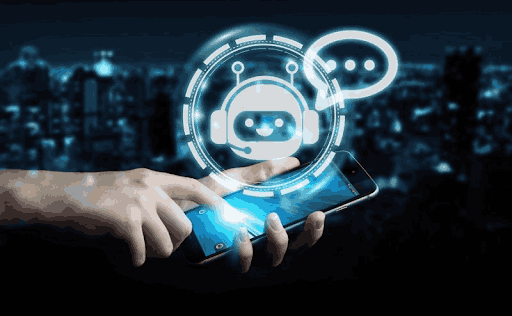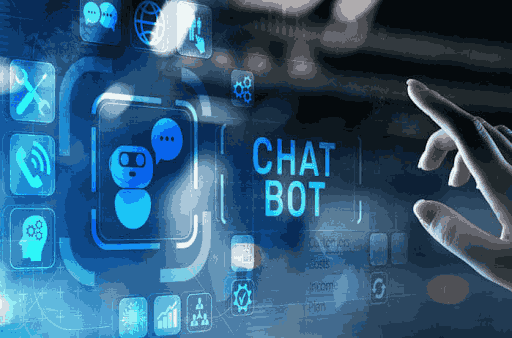The selection of business chatbots features multiple-choice options. The trend today separates between Custom GPTs that utilize advanced OpenAI language models and standard traditional chatbot frameworks using basic rule-based AI systems or fundamental artificial intelligence algorithms.
The correct solution depends on factors that include your business needs complexity your budget limits and your requirements for personalized experiences. This article offers further details about these two system types.
Understanding the Basics
Custom GPTs:
OpenAI’s GPT models have their parameters adjusted to create these custom versions. Custom GPT models receive training to understand specific business requirements while processing specialized terminology which helps them deliver personalized generative AI development services to end-users.
Custom GPTs maintain a dynamic framework that evolves through real-time engagements and features custom configuration options for business verbalization and business voice capabilities.
Traditional Chatbots:
Traditional chatbots rely on predefined decision trees for operation and adopt rule-based programming in addition to simplistic AI models.
Bots operate using defined commands or set keywords and structured user dialogs. Custom GPT models remain inferior to Custom GPTs regarding contextual understanding because they need continuous manual maintenance during business evolution.
Flexibility and Customization
Custom GPTs:
Custom GPTs benefit from a high level of adaptability which stands as their primary strength. Such systems enable developers to adjust them for multiple business sectors while letting them modify the programming to deliver personalized advice or assistance.
The system creates a natural dialogue with users which enables it to provide adapted personalized customer interactions across multiple interactions.
Users must dedicate additional time for managing GPTs although these systems deliver exceptional power. The process of making the model ready for specific tasks and industry terminology requires data training together with successive performance updates which might take considerable time.
Traditional Chatbots:
The main advantage of traditional bots is their straightforward development process for handling straightforward repetitive workloads.
These systems allow developers to establish predefined questions and answers which results in stable performance limits.
These bots show limitations in their capacity to interact with users regarding unconstrained questions and responses. When users pose questions not supported by pre-programmed parameters the system becomes unable to provide either appropriate responses or maintain an appropriate response time
User Experience and Natural Language Processing
Custom GPTs:
The GPT models from OpenAI demonstrate high proficiency in understanding diverse data sets consisting of extensive amounts because their training involved huge volumes of natural, human-like responses. GPT-enabled chatbots create a more immersive and flowing dialogue because they handle complex questions from users which parts of speech recognition depend on.
User experience with GPTs benefits from their excellent conversational ability though users sometimes encounter distracting responses that are verbose or unfocused or stray from the original subject. Proper safeguards along with proper tuning should always be in place.
Traditional Chatbots:
The use of rule-based framework chatbots delivers highly predictable responses that become essential when precise brand-aligned communication is needed.
Chatbots experience two primary drawbacks since users lose patience when a bot leads them through unengaging conversations that either fail in text comprehension or allow natural conversation to falter.
Cost and Development Time
Custom GPTs:
Custom GPTs offer an efficient scalable solution after the completion of deployment. Time usage becomes less extensive because the model acquires knowledge to adjust during operation.
A Custom GPT presents businesses with an advantageous long-term investment because it offers both flexibility and strong institutional support.
The development process requires time and specialist expertise. Creating customized GPT models or developing exceptional chatbots could demand notable financial investments and skilled personnel.
Traditional Chatbots:
Rule-based chatbots operate with exact response patterns making them ideal for essential matters that require company standards to be maintained.
Users commonly experience robotization during the process because the bot either misunderstands their questions or shows unnatural conversation patterns. This leads to frequent user irritation.
Real-World Applications
Custom GPTs:
The Custom GPT system provides comprehensive customer support through complex problem-solving and interactive user-centric solution development.
GPT-powered chatbots simplify customer service operations by delivering customized marketing solutions and personalized recommendation systems as well as enabling standing sales and marketing assistance.
The system generates content ranging from blog posts to reports and other text outputs that follow your brand voice to boost productivity levels in your organization.
Custom GPT systems that receive specialized healthcare and legal knowledge enable businesses serving these sectors to provide preliminary consultation and client inquiry triage.
Traditional Chatbots:
Rule-based chatbots address both customer inquiries through immediate FAQ replies and basic care needs that involve order tracking and location hours.
A traditional chatbot system proves useful for understanding potential customer information as well as basic lead qualification by asking simple questions.
Traditional chatbots enable users to conduct surveys and polls through their systems to obtain quick structured customer feedback.
Scalability and Maintenance
Custom GPTs:
The main advantage of GPT models lies in their scalability because businesses handling variable demands or massive simultaneous customer interactions can readily boost their capacity.
GPT machines can process multiple thousands of user conversations while maintaining their standard of service after receiving initial training.
A maintenance system should continuously check the bot’s accuracy and follow company objectives to manage any errors while preventing biased actions from occurring.
Traditional Chatbots:
Traditional chatbots maintain scalability through two approaches including decision-tree increase and FAQ database expansion.
Growth in customer requirements leads to an expansion of both rules and paths in the chatbot which results in management difficulties. Your business expansion will face difficult maintenance issues because of this system.
Security and Compliance
Custom GPTs:
The combination of proper data management protocols enables Custom GPTs to maintain complex restrictions regarding data privacy such as GDPR and HIPAA requirements.
OpenAI’s models possess solid privacy features which require careful attention to training data selection and model utilization.
OpenAI GPT requires vigilant management to stop the generation of sensitive data while staying compliant with industry regulations.
Traditional Chatbots:
These programmable bots enable simple control of decision protocols which allows predefined information processing rules.
Traditional chatbots present one downside through their inflexible nature which makes it difficult for them to embrace security adjustments or compliance framework updates.
Conclusion
To determine which system best suits your business, analyze your needs with the points mentioned above.
Go with Custom GPTs if:
- The chatbot system should handle complex dynamic interactions as one of its core functionalities.
- The nature of your company needs extremely detailed customization options to function properly.
- Your goal is to execute and automate dialogue advancement through channels that produce realistic and attractive interactions.
- Your organization enjoys both the necessary tools and expertise to operate and refine the system.
Traditional Chatbots provide an optimal solution when these three criteria match your requirements:
- The requirements for your chatbot remain basic since you need it to execute standard tasks that include FAQs or order status updates.
- The choice of a quick deployment system makes sense when money is restricted.
- A predictable rule-based system with basic functions will satisfy you because you do not require advanced human-like interactions.
A combined solution of standard chatbots processing everyday questions plus Custom GPT systems handling deep client interactions usually provides successful outcomes for businesses. The solution that will work best for your business and customers can be determined when you identify their particular requirements and their needs. If you are looking for an efficient AI-powered support system, a mobile app development company in Delhi can help you integrate chatbots and Custom GPT solutions seamlessly into your business operations.


